Read next
The latest news, updates and expert views for ambitious, high-achieving and purpose-driven homeowners and property entrepreneurs.

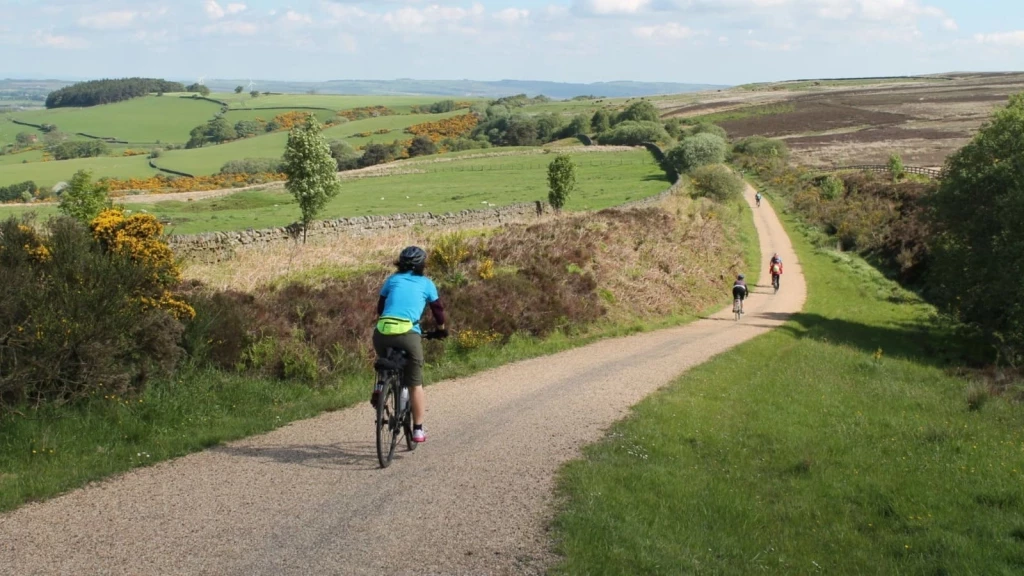
Sustainable location is where most Grey Belt applications succeed or fail, yet it's the test the planning industry understands least.
Since December 2024's NPPF revision introduced explicit references to paragraphs 110 and 115, the rules have changed fundamentally, but most planning submissions still argue cases as if nothing happened.
The result?
Applications refused even in districts with catastrophic 0.91-year housing supplies, whilst identical sites down the road gain planning consent because someone understood how to frame the argument properly.
In this article, I break down why the sustainable location test matters, how the NPPF 2024 changes reframed the debate, what planning officers and inspectors are actually looking for in successful cases, and where most applications go wrong.
You'll discover proven techniques for demonstrating settlement integration, realistic transport alternatives, and negligible traffic impact, which are the three factors that decision-makers prioritise above all else.
Whether you're exploring the potential of your Grey Belt site, drafting a planning statement, responding to a case officer's concerns, or preparing appeal evidence, these strategies for sustainable location assessment will transform how you present paragraph 155(c) compliance.
The opportunity to unlock Grey Belt sites is vast, but only if you understand what the decision-makers are actually assessing and how to present evidence that they can approve confidently.
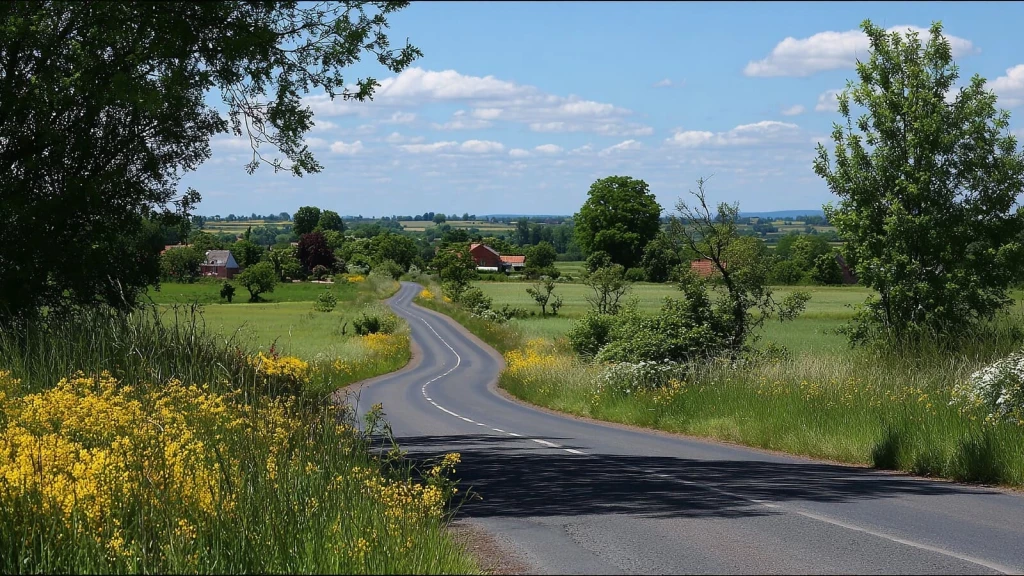
Sustainable location refers to a site's capacity to support development through realistic access to services, facilities, and transport choices appropriate to the proposal's scale and rural or urban context.
Under NPPF 2024 paragraph 155(c), it requires particular reference to paragraphs 110 and 115, which emphasise actively managing growth patterns to promote sustainable transport whilst recognising that opportunities to maximise sustainable transport solutions vary significantly between urban and rural areas.
Recent Grey Belt appeal decisions demonstrate that sustainable location is a proportionate planning judgement, not a rigid checklist. Planning inspectors assess whether residents can make some everyday trips by walking, cycling, or public transport without complete car dependency, scaled to the development type and settlement pattern.
For Grey Belt applications, this means proving the site sits within a legible settlement with tangible non-car options and safe routes, rather than replicating metropolitan mobility standards in inherently rural places.
The definition of sustainable location isn't what most people think it is. It's not a checklist of bus stops, GP surgeries within 800 metres, or tick-box accessibility studies. It's a planning judgement about whether real people can live reasonably well in a place without being prisoners of their car keys.
The traditional view (the one that has dominated planning committees for decades) treats sustainable location as an urban phenomenon. If you're not within a 400-metre crow-fly from a railway station with half-hourly services, you're suspect. If the nearest Tesco requires crossing an A-road, you've failed.
This orthodoxy has calcified decision-making and turned paragraph 155(c) into a weapon wielded against rural and semi-rural development, even where it makes perfect sense.
The paradigm shift with the updated NPPF 2024 demands that a sustainable location is proportionate and place-specific. It scales to the proposal, respects the settlement pattern, and asks whether the development actively manages growth in support of sustainable transport objectives, not whether it replicates metropolitan mobility.
For Grey Belt applications, this distinction is everything. With the new Green Belt rules, planning inspectors are moving away from demanding urban-frequency bus services or 24-hour pedestrian infrastructure for single dwellings at village edges. Instead, they're asking:
This is planning pragmatism at its best. It recognises that a household in a Group 3 village with a pub, a farm shop, and an infrequent but usable bus to the nearest market town is not living unsustainably if they also own a car. It's living in a village, which is a legitimate, valuable, and policy-supported settlement form in England's spatial planning tradition.
The opportunity here is profound. If you can demonstrate that your Grey Belt site benefits from realistic walking routes to at least some local services, visible public transport options (even if modest), and forms part of an existing cluster rather than isolated sprawl, you can satisfy 155(c) without needing to prove it functions like Clapham Junction.
In short, the test for sustainable location is about managing patterns of growth (paragraph 110) and prioritising sustainable modes where practical (paragraph 115), not eradicating car use entirely.
This reframing unlocks thousands of Grey Belt plots that have been trapped in Green Belt stasis for decades, not because they're genuinely remote or car-dependent, but because planning officers and committees have been applying an inappropriately urban lens to inherently rural places.
The updated NPPF 2024’s explicit recognition of rural proportionality changes the equation entirely. Sites previously dismissed as inaccessible can now be argued successfully if the evidence shows realistic non-car options for some trips, safe walking routes, and negligible traffic impact.
NIMBY objectors and risk-averse planning officers alike treat rural flexibility as a Trojan horse for car-dependent sprawl. That misreads the policy entirely. This isn't about gaming the system or lowering standards. It's about applying the right standard to the right place.
A two-dwelling scheme in a Hertfordshire village with a pub, primary school, and twice-daily bus service doesn't need to perform like Canary Wharf to be sustainable. It needs to function as a well-connected rural settlement, which is precisely what paragraph 110 permits and what recent appeal decisions have validated.
The implications extend beyond individual applications. Local planning authorities with significant Grey Belt land and poor housing delivery records due to a lack of five-year housing land supply now face a strategic choice: continue applying outdated urban metrics and watch appeals succeed on proportionality grounds, or proactively reassess their approach to village-edge development and channel growth intelligently.
For applicants and landowners, the message is clear. If your site is Grey Belt, embedded in a settlement, and benefits from tangible (if modest) transport choices, the policy framework now supports you in a way it simply didn't before 2025.
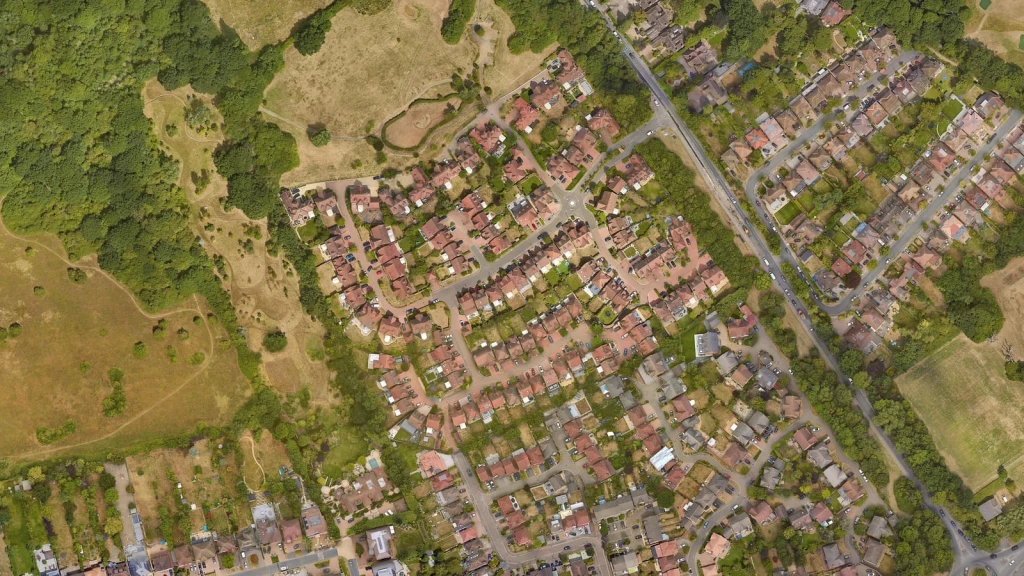
Sustainable location isn't merely one of four tests in paragraph 155. It's the test that determines whether your Grey Belt proposal succeeds or collapses, the criterion where planning officers and inspectors spend most of their analytical energy, and the issue that separates robust applications from speculative punts.
Understanding how to construct a sustainable location case effectively determines whether you secure Green Belt planning consent at the first attempt or spend months trapped in a refusal-appeal-resubmission loop. Yet most applications get this catastrophically wrong, repeating the same tired mistakes that have been failing for years.
After analysing every Grey Belt appeal decision since December 2024, one truth emerges with absolute clarity: sustainable location is a narrative argument anchored in proportionality, settlement context, and honest assessment of route quality and trip generation. Get the narrative right, and the gatekeeper opens. Get it wrong and even a 0.91-year housing supply won't save you.
Sustainable location is the gatekeeper test in paragraph 155(c), and it's the criterion where most Grey Belt appeals currently succeed or fail.
Get it wrong, and your application collapses into inappropriate development requiring very special circumstances, a vastly higher bar. Get it right and you've cleared the path to approval in areas with acute housing need and supply failures.
But here's what the planning industry has been slow to grasp: sustainable location for Grey Belt isn't a technical exercise; it's a narrative one.
The shift in the new NPPF 2024 was seismic. By explicitly requiring "particular reference to paragraphs 110 and 115," the policy now anchors sustainable location in two principles that are fundamentally flexible and context-sensitive.
Paragraph 110 acknowledges that "opportunities to maximise sustainable transport solutions will vary between urban and rural areas, and this should be taken into account in both plan-making and decision-making." This is your licence to argue proportionality. It's permission (in national policy) to say that a site 20 minutes' walk from a village with a twice-daily bus to York is sustainable for what it is.
Paragraph 115 requires decision-makers to ensure "sustainable transport modes are prioritised taking account of the vision for the site, the type of development and its location." The critical phrase is "taking account of." This isn't a command to achieve modal perfection; it's an instruction to tailor the test to the place.
The pattern is clear. Sustainable location is a matter of planning judgement, not arithmetic. The planning consultants' job is to give planning officers and inspectors the evidence and framework to make a positive judgement confidently. They need to focus on four elements (settlement pattern, route quality, transport realism, and scale) and trust the proportionality framework to convert evidence into approval.

Publishing detailed analysis of appeal decisions that matter most to our clients and to us as specialist Grey Belt architects and planning consultants is how we stay ahead of shifting policy interpretations and equip our cases with evidence-led arguments that inspectors trust.
The following case studies reveal how the NPPF 155(c) "sustainable location" test functions as a proportionate, context-led judgement in real decision-making, not an urban checklist imposed on rural places.
The real question inspectors ask is straightforward: does this proposal make practical use of the existing settlement pattern with some realistic non-car options, scaled to what is proposed, in this place?
The evidence base we've spent hours analysing is now substantial enough to identify clear patterns. The threshold for success is straightforward: where routes are safe and there is at least some public transport or walkability, Grey Belt schemes clear 155(c).
This applies to both minor and major schemes. Inspectors do set lower expectations for one or two dwellings than for larger proposals, but where walking is unsafe and local services are all but absent, schemes fail regardless of scale.
Get this wrong and the consequences are stark. Applications are refused even in districts with a 0.91-year housing land supply, as at Fobbing, and appeals are dismissed even when proposals meet Grey Belt criteria (a) and (b), as at Colton.
Get it right and you unlock schemes on land that was previously untouchable, delivering homes where they’re desperately needed without undermining Green Belt purposes. As such, the difference isn't the site's quality or housing need. It's how you construct the case.
This approach aligns closely with Kevin Lynch’s theory of “legibility” from The Image of the City (1960), which emphasises that settlements succeed when their structure is easily understood and navigable by their users. In the context of Grey Belt development, a sustainable location is not about density alone but about reinforcing this legible pattern, ensuring movement, access, and connections feel natural and functional within the settlement’s existing morphology.
Equally relevant is Jane Jacobs’s concept of “eyes on the street” from The Death and Life of Great American Cities (1961), which highlights how the vitality and safety of a place emerge from human presence and interaction. Applied to Grey Belt contexts, this reinforces that sustainability stems not just from transport accessibility but from creating environments that encourage everyday activity, community, and passive surveillance.
The appeal (APP/R3650/W/24/3352222) concerned land adjoining Hydon Farm, Hydestile, Godalming, within Waverley Borough Council's jurisdiction. The proposal was for a single four-bedroom dwelling.
In terms of sustainable location, the planning inspector explicitly relied upon NPPF paragraphs 110 and 115, which recognise that transport solutions vary between urban and rural areas, and accepted a proportionate transport case. The site benefited from local public footpaths and a bus stop approximately 550 metres away, providing services to Guildford. For a single dwelling, these factors proved sufficient to satisfy paragraph 155(c). Surrey County Council, as the local highway authority, raised no objection.
The site was treated as Grey Belt, with the proposal found not to strongly conflict with Green Belt purposes (a), (b), or (d). Waverley's inability to demonstrate a five-year housing land supply weighed significantly in favour under paragraph 155(b). As a non-major development, paragraph 155(d) was not engaged. The appeal was allowed subject to conditions.
The critical takeaway is that in small rural schemes, inspectors accept "good enough" multimodal prospects rather than demanding urban-frequency services. A walkable bus stop and usable footpath network, combined with negligible trip generation, can satisfy accessibility requirements when framed around proportionate accessibility arguments.
A successful outcome emerged from appeal (APP/D2320/W/25/3359070) at land adjacent to Taleford House, Squirrel Lane, Anderton, with Permission in Principle granted for a single dwelling despite its semi-rural setting.
From a location sustainability standpoint, the planning inspector recorded that the plot sits within easy walking distance of Horwich town centre, schools, and bus services. This proved sufficient for a single dwelling to be judged locationally sustainable without urban-style evidence on bus frequencies or full Transport Assessment-level modelling. Proximity and practicality carried the decision.
The site's fringe position and contained character meant it did not strongly contribute to urban sprawl, settlement coalescence, or harm to the historic setting, warranting Grey Belt treatment. Chorley's housing supply shortfall formed part of the context when the appeal was allowed on 30th April 2025.
The key lesson from this appeal is that for single dwellings on Grey Belt land at the town edge, practical walkability and modest trip profiles satisfy paragraph 155(c) without meeting urban standards. Frame the test as "is this sensible in this place for this scale?" rather than "does it resemble a town centre location?"
The appeal (APP/M3645/W/24/3339699) at Beacon Platt, High Street, Dormansland secured approval for four semi-detached dwellings on garden-edge land surrounded by existing development.
In the context of location sustainability, the site's position within the settlement pattern proved decisive. Dormans railway station lies approximately 0.5 miles away, with bus stops along the High Street, albeit with variable services and no Sunday provision. Even in a rural-feeling village, the inspector considered these options meant the site "would not be in an unsustainable location." Pedestrian improvements secured by condition, alongside on-plot electric vehicle charging and cycle provision, reinforced the decision.
The plot does not strongly contribute to Green Belt purposes (a), (b), or (d), warranting Grey Belt designation. Tandridge's inability to demonstrate a five-year housing land supply supported the proposal under paragraph 155(b). Committee minutes record that the appeal was allowed on 22nd January 2025.
What this appeal demonstrates is that for small village-edge schemes, inspectors prioritise embeddedness within the settlement pattern and the presence of some public transport over perfect service frequency. Settlement pattern comes first, frequency second, with proportionate mitigation bridging any gaps.
Green light was given for the appeal (APP/M3645/W/25/3360870) at Marhaba, Antlands Lane, Shipley Bridge to proceed with demolition of the existing building and erection of a two-bedroom dwelling with outbuilding.
Considering sustainable location, the inspector cited paragraph 155 directly, framing criterion 155(c) with reference to paragraphs 110 and 115. Paved footpaths nearby and observed bus stops, though without street lighting along this stretch, which might discourage walking at certain times, were noted. Crucially, the site sits within a loose group of existing houses, and for a single dwelling, the location was deemed sustainable on balance.
The part-garden site within a small cluster did not strongly serve Green Belt purposes, enabling Grey Belt treatment. The Council's housing land supply position and the non-major scale meant the paragraph 155 route was available without the Golden Rules applying. The appeal was allowed on 5th August 2025.
This decision offers a blueprint for single dwellings in looser rural clusters. Demonstrate that the site forms part of an existing group, evidence at least some walkability and bus options, acknowledge limitations such as street lighting, then explain why negligible trip generation keeps the proposal within the spirit of paragraphs 110 and 115. Balanced, honest framing proves persuasive.
When it came to the appeal (APP/J1915/W/25/3362960) at 72 Nutcroft, Datchworth, Knebworth, outline planning permission was granted for a single dwelling within the built-up village envelope.
The site is served by a basic mix of day-to-day facilities with bus connections. The inspector found paragraph 155(c) satisfied for a single plot, with the village context and short routine trips carrying the decision.
In-village land did not strongly contribute to Green Belt purposes, aligning with the Grey Belt framework. East Hertfordshire's housing land supply shortfall formed part of the positive balance, with paragraph 155(d) inapplicable to this non-major scheme.
This case demonstrates that in-village Grey Belt often represents the lowest-friction route through paragraph 155. The settlement already organises daily life, so the question becomes whether one additional household can function within that pattern without substantial new infrastructure. A concise, site-specific answer typically succeeds.
Less successful was an appeal (APP/T4210/W/25/3363699) at land opposite 41 Arthur Lane, Ainsworth, which saw the proposal for replacement of stables with a bungalow dismissed on 18th August 2025.
Looking at the sustainable location test, despite a pavement towards Ainsworth, the inspector found insufficient evidence of realistic access to everyday services and sustainable travel choices for likely journeys, set against junction visibility concerns. On the facts of this particular lane, criterion 155(c) was not satisfied.
The proposal would cause substantial harm to Green Belt openness and did not meet paragraph 154(g). With Green Belt harm and sustainability concerns combined, the appeal failed.
What this dismissed appeal proves is that rural proportionality has limits. Where walking routes are unsafe or hostile and demonstrable public transport choice is very weak, single plots can and do fail criterion 155(c). Evidence must address the quality of routes and the actual pattern of daily trips, not simply the presence of a pavement on a map.
The appeal (APP/M4525/W/24/3356172) for the Cleadon Lane site in Whitburn granted outline permission for 32 dwellings, demonstrating that medium-scale village-edge development can satisfy paragraph 155(c).
The inspector assessed sustainable location through the lens of the village's settlement form and adjacency to existing development. With local services nearby, established footways and bus links on Cleadon Lane, criterion 155(c) was satisfied without demanding metropolitan service frequencies or city-centre proximities. The judgement emphasised proportionate assessment anchored in the rural-coastal context.
Grey Belt designation followed from the site not strongly contributing to Green Belt purposes (a), (b), or (d). Housing need and supply factors added weight, with no unacceptable residual impacts remaining once design and access conditions were applied. The appeal was allowed in 2025.
What this 32-dwelling approval proves is that practitioners should avoid over-specifying urban metrics in rural places. Where the settlement is legible, services are genuinely reachable, and everyday trips have realistic non-car options, inspectors have found criterion 155(c) satisfied for medium-scale village-edge development.
The appeal (APP/M3645/W/24/3352066) for the site at Perrysfield Farm, Gibbs Brook Lane, Broadham Green, achieved permission for 29 dwellings, including 10 affordable homes and 10 dwellings for active older people, demonstrating how mitigation can overcome accessibility challenges.
Sustainable access was elevated to a main issue. The inspector weighed the rural lane context against a secured package of measures: new footpath links, bus vouchers, highway works, and permeability to nearby services. On that evidence, everyday trips could be made safely by non-car modes often enough to satisfy a proportionate reading of paragraphs 110 and 115 and support a positive overall balance.
Parts of the scheme fell within paragraph 154 exceptions, with the remainder weighed in the Green Belt balance. Heritage matters proved neutral to positive, whilst obligations covered affordable housing, older persons' units, open space, and the movement package. On balance, the benefits clearly outweighed Green Belt harm. The appeal was allowed on 9th May 2025.
This decision demonstrates that where routes are imperfect, applicants should solve the problem directly. Inspectors respond to concrete, funded interventions that convert theoretical proximity into safe and attractive walking, cycling, and bus travel. Combine tailored mobility measures with a clear housing mix rationale to deliver sustainable location in rural-edge settings.
A successful outcome emerged from the appeal (APP/A2335/W/24/3350855) at land north of Sunningdale Crescent, Hest Bank, with permission granted for 27 specialist bungalows for older people, demonstrating how targeted housing can meet sustainable location tests in edge-of-settlement contexts.
When it comes to sustainable location, the inspector recognised the edge-of-settlement setting but placed weight on direct pedestrian and cycle links to surrounding streets and the potential towpath connection, concluding that older residents would retain practical access to local services. In line with paragraphs 110 and 115, criterion 155(c) was judged proportionately for a smaller scheme serving a defined need.
Grey Belt designation was accepted, with housing delivery benefits deemed substantial. Detailed conditions secured accessibility, construction management, and ecology safeguards. The overall planning balance under NPPF paragraph 11(d)(ii) favoured approval, with no countervailing policy outweighing the benefits. The appeal was allowed on 9th May 2025.
This successful appeal shows that criterion 155(c) can be satisfied where walkable links are tangible and improvements are secured. Present the mobility reality of the target residents and demonstrate how design, permeability, and modest off-site works transform a semi-rural edge into an everyday, service-connected place.
The inspector approved an appeal (APP/M1520/W/24/3356256) at land south of Catherine Road, Benfleet, allowing up to 47 dwellings, illustrating how mid-sized schemes can satisfy sustainable location requirements through embedded connectivity and proportionate improvement.
With respect to sustainable location, the inspector set criterion 155(c) within the settlement pattern rather than applying strict urban accessibility metrics. Proximity to Benfleet's services, established footways, public transport opportunities, and a package of pedestrian improvements led to a finding that residents would have a realistic choice of modes for day-to-day needs. The decision emphasised that sustainable location is a planning judgement anchored in paragraphs 110 and 115 and applied proportionately to the site's semi-urban edge.
Grey Belt status was established because the land did not strongly contribute to purposes (a), (b), or (d), whilst the Council's shortfall in five-year supply amounted to demonstrable unmet need for paragraph 155(b). The Golden Rules were addressed through affordable housing and infrastructure commitments, with no residual technical harm remaining that outweighed policy compliance. The appeal was allowed on 29th August 2025.
This 47-dwelling approval demonstrates that for mid-sized schemes, evidence that stitches the site into the everyday geography of schools, shops, and bus corridors proves persuasive. Demonstrate the walking routes as they are used, the crossings to be built, and the realistic rail and bus choices that residents will actually take. That is the proportionate criterion 155(c) test in practice.
Less successful was an appeal (APP/J1915/W/25/3366406) at Land to the south of 111 Burnham Green Road, which saw an outline application for two dwellings dismissed on 29th August 2025, though notably the inspector found criterion 155(c) satisfied despite the ultimate refusal.
The only live dispute under paragraph 155 concerned criterion (c). The inspector accepted the rural context, noting some local services, including a public house, village hall, and beauty salon within reasonable walking distance, with bus services to Welwyn Garden City and Hertford, albeit not particularly frequent.
Crucially, the planning inspector leaned on consistency with a recently permitted adjacent dwelling. The Council had granted planning permission for a single dwelling to the north of the site without raising sustainability concerns, despite Burnham Green being classified as a Group 3 village amongst the smallest settlements in the District.
Given the appeal site's proximity within the same village context, the inspector found it would be "illogical to reach a different judgement" on sustainability credentials. Occupiers would have access to some services within the village and the opportunity to travel sustainably to larger settlements, meaning they would not need to be entirely reliant on private vehicles as expected in rural areas.
Grey Belt status was accepted, with East Hertfordshire's housing land supply shortfall (between 3.4 and 3.7 years) forming part of the positive balance. However, the appeal was ultimately dismissed due to significant harm to the character and appearance of the area. The site forms an undeveloped parcel with distinct rural characteristics, contributing towards a valuable void in built form, creating an important gap between buildings. Development would erode this gap and fail to reflect local distinctiveness, conflicting with Policy DES4.
The inspector's determination that development would "fail to reflect local distinctiveness" exposes an often-underappreciated dimension of character assessment: the spaces between buildings can be as defining as the buildings themselves. This "valuable void in built form" functions as negative space in the settlement's composition - its absence would fundamentally alter the rhythm and legibility of Burnham Green's built pattern.
As such, under the tilted balance at paragraph 11(d)(ii), the inspector concluded the adverse impacts would significantly and demonstrably outweigh the benefits when assessed against the Framework taken as a whole, with particular regard to securing well-designed places.
The dismissed appeal demonstrates two critical points: sustainable location can be satisfied in rural villages with modest facilities and infrequent bus services, particularly where the Council has recently granted permission on similar sites in the same settlement. However, satisfying criterion 155(c) alone is insufficient. Character and appearance harm can still tip the planning balance against approval, even where Grey Belt policy tests are met and housing need is acute.
Another unsuccessful appeal (APP/M1595/W/25/3360211) was for land adjacent Starlight, Patricia Drive, Fobbing saw an outline application for up to four dwellings dismissed on 18th August 2025, with the planning inspector finding the site failed to meet criterion 155(c) on sustainable location grounds.
The parties agreed the site comprised Grey Belt land, with no conflict with purposes (a), (b), or (d), and that Thurrock had only a 0.91 year housing land supply representing demonstrable unmet need. As a non-major development, the Golden Rules did not apply. However, sustainable location proved determinative.
Fobbing contains a farm shop, with a public house and church, around a 20-minute walk from the site. There are no doctors or dentists nearby. The nearest bus stops lie on High Road, providing limited services comprising just four buses per day, Mondays to Fridays only, between Orsett Hospital and Basildon.
As for sustainable location, the inspector acknowledged that walking, cycling, and bus use would be an option for some trips by some people. However, the frequency of buses and the distance to services would limit their attractiveness, particularly for older people, those with reduced mobility, or with children, and at times of darkness and bad weather. Future occupiers would be likely to be reliant on private vehicles to access services. Consequently, the proposal would not be in a sustainable location and did not fall within the exception in paragraph 155.
The inspector also found the proposal would not constitute limited infilling in a village under paragraph 154(e). Patricia Drive comprises an unpaved track forming a public right of way, largely consisting of fields with boundary hedges giving it a predominantly rural character, which does not form part of the more urban built development comprising Fobbing village to the east.
As an inappropriate development, the proposal would cause substantial harm to Green Belt openness (both spatial and visual) and conflict with the purposes of safeguarding the countryside from encroachment and assisting in urban regeneration. The inspector gave significant weight to housing delivery benefits given the acute shortfall, but found these did not clearly outweigh the Green Belt harm. Very special circumstances did not exist.
The key lesson from this refusal is that bus services of just four per day and facilities at a 20-minute walk proved insufficient for sustainable location, with the inspector focusing on realistic journey patterns for residents with varying mobility levels and in different weather conditions. This sets a higher threshold than some recent allowed appeals and demonstrates that extremely limited public transport frequency can fail criterion 155(c) even in the context of acute housing need.
A further planning appeal (APP/U2750/W/25/3365725) was unsuccessful in Lady Flat Farm, Lady Flat Lane, Colton, Tadcaster, saw an application for conversion of existing buildings into two dwellings dismissed on 28th August 2025, with the planning inspector finding the proposal failed on multiple grounds, including sustainable location.
The Council accepted the site comprised Grey Belt land under criterion 155(a), and with a 2.6 year housing land supply, unmet need was demonstrated under criterion 155(b). As a non-major development, criterion 155(d) did not apply. However, sustainable location proved fatal to the Grey Belt exception.
The site occupies a relatively isolated countryside location, some distance from the nearest village of Colton. Whilst the walking distance would not be excessive, access is along an unlit country road with no demarcated footway. The planning inspector found the nature of this route would be likely to deter pedestrian and cycling access to the village, particularly in the evenings and during winter months. The appellant referenced the proximity of public footpaths, but failed to demonstrate that these would provide safe or suitable access in terms of lighting and surfacing.
Colton's facilities proved extremely limited, comprising only a public house, with no services to meet the day-to-day needs of residents. A bus service operates between Colton and York, but the inspector observed that this was relatively infrequent and would not provide a significant alternative to private car reliance due to convenience.
Concerning sustainable location, the inspector acknowledged that paragraph 110 recognises opportunities to maximise sustainable transport solutions will vary between urban and rural areas. However, this does not negate the requirement to actively manage patterns of growth in the interests of promoting sustainable transport, or ensure safe and suitable access can be achieved for all users as required by paragraph 115. Future occupiers would not be able to rely on accessible local services and facilities to serve everyday needs without travelling some distance and, in all likelihood, by car. The proposal, therefore, failed criterion 155(c).
The proposal also failed the paragraph 154(h)(iv) exception for the re-use of buildings. Although a structural survey indicated the building was in relatively good condition, the proposed works would see roof and wall materials removed in their entirety and replaced, with the internal concrete floor slab also removed and replaced. Despite retaining the steel frame, this would go beyond what could reasonably be considered re-use and would represent a rebuild.
Additionally, insufficient evidence was provided to demonstrate that the proposal met the de minimis exception for Biodiversity Net Gain, with habitat changes likely exceeding the 25m² threshold.
Housing benefits carried moderate weight given the 2.6 year supply position, but did not clearly outweigh substantial Green Belt harm, significant sustainability harm, and BNG concerns. Very special circumstances did not exist.
The stark lesson from this failure is that even for barn conversions and small-scale rural proposals, inspectors apply rigorous scrutiny to sustainable location. Unlit roads without footways, very limited village facilities, and infrequent bus services will fail criterion 155(c), with inspectors emphasising that paragraph 110's rural flexibility does not negate requirements to manage growth patterns sustainably or ensure safe access for all users under paragraph 115.

The planning appeal decisions I examined above reveal a clear pattern: sustainable location for Grey Belt is a proportionate planning judgement that succeeds when the argument is honest, evidence-led, and tailored to its context.
The following framework distils what works, what fails, and how to construct cases that inspectors can approve confidently.
Winning on sustainable location in Grey Belt cases means demonstrating three things clearly and concisely:
Planning inspectors consistently ask whether the site reads as part of the settlement. The site must be embedded in a settlement pattern, not isolated in open countryside. Show enclosure, neighbouring development, continuity of frontage, and garden context.
If the site is within or immediately adjoining the built-up area, say so plainly and back it with mapping. This framing allows inspectors to give weight to "pattern first, frequency second," as they did at Dormansland and Anderton.
If it reads as part of the village to a person standing on the street, prove it with annotated photos and site context plans that demonstrate visual and functional integration.
Some trips can realistically be made by non-car modes. You don't need to prove every trip can be. For one to four dwellings, demonstrating that residents can walk to a pub, a farm shop, a bus stop, or a primary school (and cycle to a larger settlement) is often enough.
However, where appeals fail, it is often because walking involves unlit, footway-less lanes or hostile links that make non-car modes unrealistic.
The solution is straightforward: Put route safety front and centre with photographs, widths, lighting, and gradients. Pair this with evidence of actual walking times and route quality.
Is it lit? Is it paved? Is it safe?
If the route is weak, propose proportionate mitigation such as a short footway link, a dropped kerb, or a crossing condition. This strategy converted marginal sites like Dormansland into acceptable locations.
The proposal's trip generation is negligible. A single dwelling generates around six to eight vehicle movements per day. Two dwellings, 12 to 16.
Even if half those trips are car-based, you're adding a handful of vehicles to a rural lane that already accommodates tractors, deliveries, and school runs. Frame the impact honestly and proportionately.
For single dwellings, keep the transport case lean and site-specific. A succinct note identifying a footpath, a bus stop within a reasonable walk, and likely trip volumes will often suffice. For two to four dwellings, add an outline travel plan with EV charging and secure cycle parking.
This means that you need to calibrate your Grey Belt planning submission to the scale: over-engineering the transport case for a one-plot scheme can distract from the proportionality you are relying on.
The failure mode is assuming sustainable location requires you to commission a full Transport Assessment for a two-house scheme, or to pretend a Group 3 village performs like a Metropolitan centre. Planning inspectors see through this immediately, and the resulting credibility gap can sink an otherwise strong application.
The most common mistakes include burying the sustainable location argument in a 40-page technical appendix that nobody reads, over-claiming about bus service quality when the reality is four buses per day (as at Fobbing), ignoring obvious route deficiencies such as unlit lanes without footways (as at Colton), and failing to address the experiential reality of walking or cycling in the location.
The reality check: If your 80-year-old mother wouldn't walk the route at 7pm in January, don't present it as if she would. Inspectors live in the real world, and they assess proposals through the lens of how real households with varying mobility, ages, and weather tolerance will actually behave.
Another critical error is neglecting to explain why the proposal's scale matters. A 50-dwelling scheme generating 400 vehicle movements per day faces a different sustainable location test than a single dwelling generating eight. If your case doesn't explicitly frame trip generation as negligible and proportionate to the rural context, you've handed the planning officer or inspector an easy refusal reason.
The evidence from Ainsworth, Fobbing, and Colton is stark: where applicants failed to construct a credible, honest narrative about accessibility, even acute housing need couldn't rescue the proposal.
Conversely, over-engineering the transport case with unnecessarily detailed modelling, junction capacity assessments for a two-home scheme, or elaborate modal shift predictions that nobody believes signals to the decision-maker that you're trying too hard to compensate for a fundamentally weak location.
The proportionate approach (two to ten pages of clear narrative, annotated photos, a simple site context plan showing facilities and routes, and an honest acknowledgment of limitations balanced by scale and context) consistently outperforms the 50-page consultant report that buries the argument under jargon.
As the applicant or the planning consultant, your task is to match the accessibility story to the scale and setting. For one to four homes at a village edge, show short, safe walks to a few everyday destinations and at least some public transport.
You are demonstrating that a modest share of trips can be non-car in practice, not that a rural hamlet performs like a town centre. Anchor this with a simple walking-isochrone plan, photos of pavements and crossings, and a one-page schedule of bus or rail opportunities that residents would plausibly use.
Demonstrating that land does not strongly serve purposes (a), (b), or (d) gets you into paragraph 155, but it does not settle design or character.
Burnham Green shows that even with 155(a) to (c) in your favour, gap erosion or townscape harm can close the door. Always lock in the basics of 155(a) and 155(b) by showing briefly why the land does not strongly contribute to purposes (a), (b), or (d) with parcel-specific evidence, and set out the current five-year supply position.
Doing so keeps the debate focused on 155(c), where your proportionate accessibility case can carry the argument. Our analysis of Grey Belt appeal examples and local planning authority documents can help evidence both points. Then pair your sustainability case with a design narrative that preserves settlement rhythm and important spaces.
When lighting is absent, gradients are steep, or services are limited, acknowledge it and explain why the residual impact is acceptable for the proposal's tiny scale.
Inspectors responded well to balanced candour at Shipley Bridge, where walking was possible but lighting was limited, yet the clustered context and minimal trips tipped the balance.
This honest approach builds credibility and allows decision-makers to realistically weigh limitations against the proposal's negligible impact.
Offer EV charging, secure cycle storage, a short new footway link, or a dropped kerb as targeted conditions. These small, credible fixes often convert a decent accessibility narrative into a robust one and demonstrate active management of growth in support of sustainable transport.
Dormansland shows how a conditioned pedestrian link can clinch the point. These interventions signal that you're not ignoring weaknesses but addressing them proportionately.
If the use generates very few trips once operational, argue 155(c) through operational reality.
Battery Energy Storage schemes and similar low-attendance uses can be sustainable in rural locations because the accessibility requirement scales with the use, not a housing yardstick.
Include attendance schedules and maintenance trip logs to prove the point. The sustainable location test is adaptable; apply it intelligently to the actual trip generation and user profile of the proposal.

At Urbanist Architecture, we finish each case note in our Design & Access Statements with a one-sentence "why this is sensible here" line. We do this because it signals to decision-makers that we're not gaming a policy quirk, but solving a place-based problem with proportionate, evidence-led measures.
By framing the argument this way, we increase the chances of approval because inspectors can see immediately that the proposal respects the settlement's character and scale rather than exploiting a technical loophole.
We strip away jargon and present facts clearly because the most persuasive cases are those that feel like common sense backed by rigorous evidence, not technical gymnastics designed to obscure a weak location.
When we anchor our sustainable location arguments in simple, visual evidence (annotated photos, walking-isochrone plans, catchment area illustrations, one-page transport summaries), we increase the chances of success because decision-makers can grasp the accessibility story quickly and confidently. They don't need to wade through 50 pages of consultant speak to understand whether the site works.
We also calibrate our planning applications for Grey Belt developments precisely to the proposal's scale. For a single dwelling, we provide two to ten pages of clear narrative with targeted photos and a site context plan. For larger schemes, we add proportionate detail without burying the core argument.
This approach works because it demonstrates confidence in the location's sustainability rather than overcompensating for perceived weaknesses. Planning officers and inspectors respond to this clarity because it makes their job easier and signals that we've genuinely assessed whether the site can function sustainably rather than trying to manufacture a case for an unsuitable location.
Finally, we acknowledge limitations honestly and explain why they're acceptable given the proposal's negligible scale. By doing this, we build credibility with decision-makers and increase the chances of approval because officers and inspectors can see we've assessed the site realistically.
The effect is cumulative. Planning officers and Planning inspectors trust our positive claims about route quality and transport choices because they've seen us acknowledge limitations honestly elsewhere in the submission. That balanced, candid framing is what converts marginal cases like Green Belt and Grey Belt developments into consents and distinguishes applications that survive scrutiny from those that don't.
For those who want the playbook, we have written 'Green Light to Green Belt Developments'. It gathers our real-world experience into clear guidance you may use immediately, and it is available on Amazon.

The opportunity is vast, and it extends well beyond the individual sites currently being tested at Green Belt appeals. Across England, thousands of Grey Belt plots sit within or adjacent to villages that possess the basic ingredients of sustainable location: a legible settlement pattern, some local facilities within walking distance, and at least modest public transport links.
These sites have been systematically refused for years under the outdated urban orthodoxy, creating a backlog of untapped development potential in precisely the locations where housing pressure is most acute and where small-scale, sensitive growth would support rather than undermine community vitality.
The 2024 Framework's explicit embrace of proportionality and rural context, combined with the emerging body of appeal decisions validating this approach, creates a window of opportunity for landowners, developers, and local authorities willing to reassess their assumptions.
For applicants, this means Grey Belt sites previously dismissed as "too rural" or "insufficiently accessible" can now be re-evaluated with a credible policy basis for approval, provided the sustainable location case is constructed with clarity, honesty, and appropriate evidence.
For local authorities struggling with housing delivery and five-year supply shortfalls, it means proactively identifying Grey Belt land that satisfies paragraph 155 and channeling growth intelligently rather than waiting for speculative applications and appeals to force the issue.
The test is navigable. The policy framework supports proportionate rural development. The question is whether your submission will make the argument with clarity, honesty, and proportionality, or whether it will try to game an outdated urban checklist and fail.
The difference between these approaches isn't marginal. It's the difference between unlocking deliverable housing in sustainable locations and watching viable sites remain trapped in planning limbo whilst housing need escalates and communities stagnate. The evidence is in. The opportunity is now. The only question is whether the industry will adapt quickly enough to seize it.

Nicole I. Guler BA(Hons), MSc, MRTPI is a chartered town planner and director who leads our planning team. She specialises in complex projects — from listed buildings to urban sites and Green Belt plots — and has a strong track record of success at planning appeals.
We look forward to learning how we can help you. Simply fill in the form below and someone on our team will respond to you at the earliest opportunity.
The latest news, updates and expert views for ambitious, high-achieving and purpose-driven homeowners and property entrepreneurs.
The latest news, updates and expert views for ambitious, high-achieving and purpose-driven homeowners and property entrepreneurs.
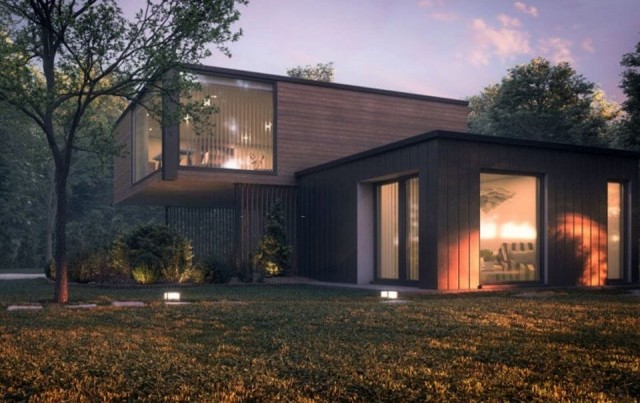
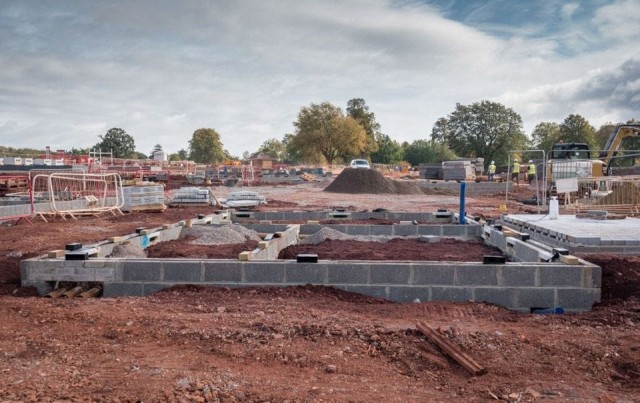
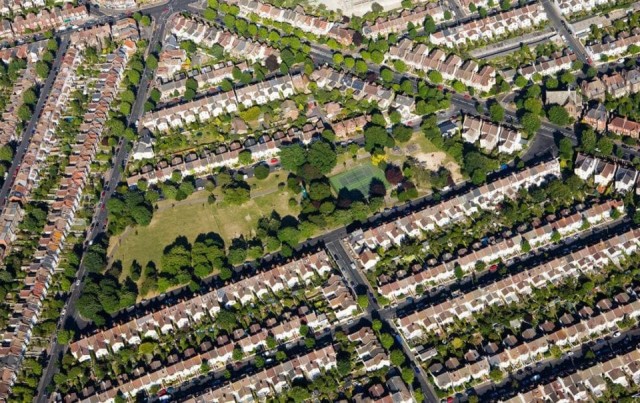

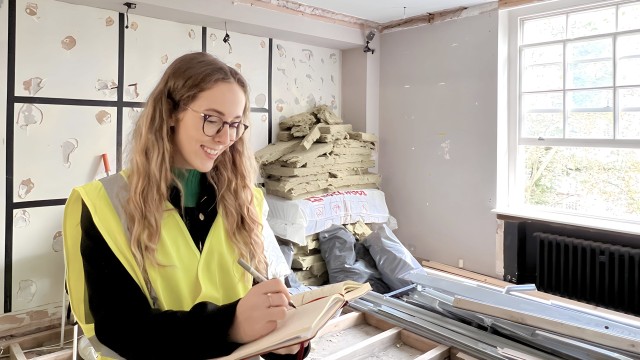
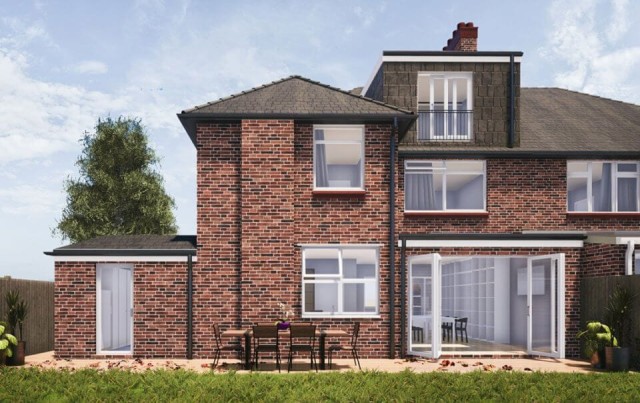
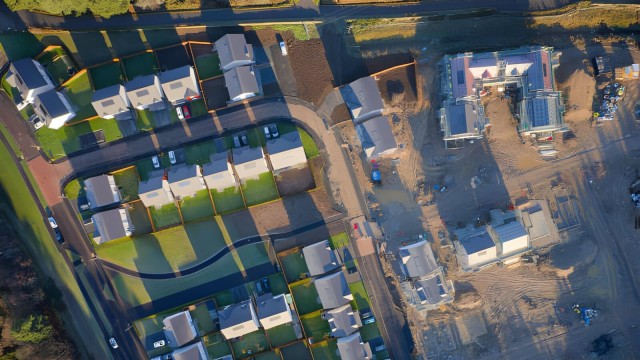
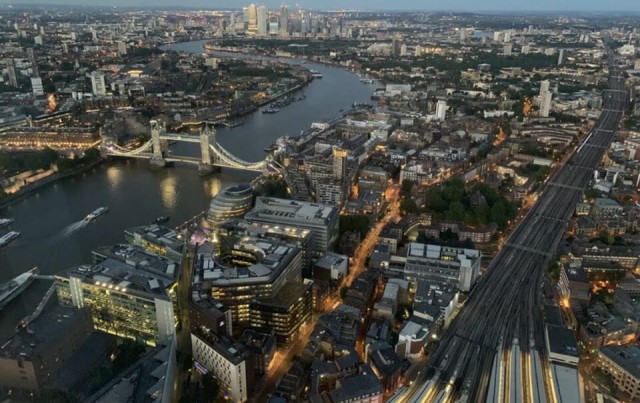

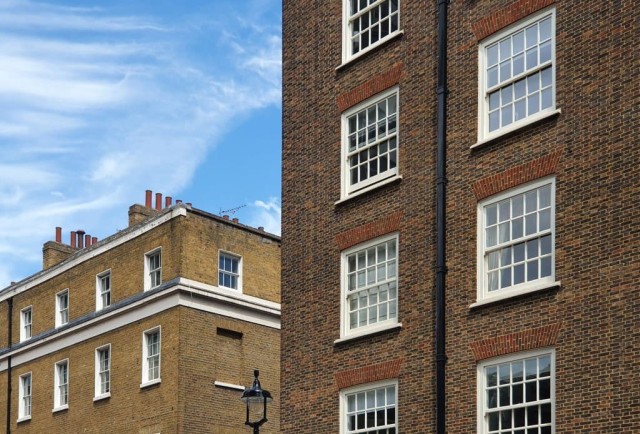
We specialise in crafting creative design and planning strategies to unlock the hidden potential of developments, secure planning permission and deliver imaginative projects on tricky sites
Write us a message